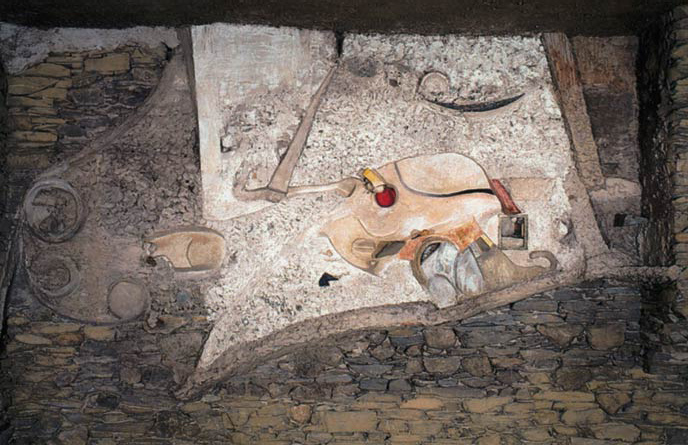Towards the end of his life the German Dadaist Kurt Schwitters (1887-1948) led a necessarily peripatetic existence, seeking refuge from the Nazis, who had branded his work “degenerate” and declared him – like many another avant-gardist of the war years – a wanted man. He fled from his native Hanover to Lysaker, near Oslo, and when that was no longer a safe haven he travelled to England, where he was interned in 1940 on the Isle of Man. His most ambitious work of art was his so-called Merzbau, once described by the painter Max Ernst as a “huge abstract grotto”. This was a sculpture-cum-assemblage created from the junkman’s treasure trove of objects trouves which the artist liked to hoard – pieces of friends’ clothing, hair, bus tickets, pieces of driftwood, even a bottle of Schwitters’ own urine – and insinuated into a labyrinth of teetering box-like constructions of wood and plaster that sprawled through the interconnecting spaces of his house in Hanover. It may have been an eccentric creation but it was also one of the most thoroughgoing expressions of the modernist belief that there should be no separation between an artist’s life and his work.
Schwitters could not take the Merzbau with him when he went on the run and while he was in England his magnum opus was destroyed by a direct hit from an Allied bomb. That was in 1943, after his release from refugee camp, and two years after that he settled in Little Langdale, near Ambleside in the Lake District. He met with a warm if slightly puzzled welcome from the locals. Finding that there was no market for his more avant-garde creations in England he earned a living by painting sympathetically observant, albeit rather conventional, portraits of his new friends and neighbours, while...

Kurt Schwitters and William Roberts, 2 exhibitions in Newcastle, 2004
02-05-2004

